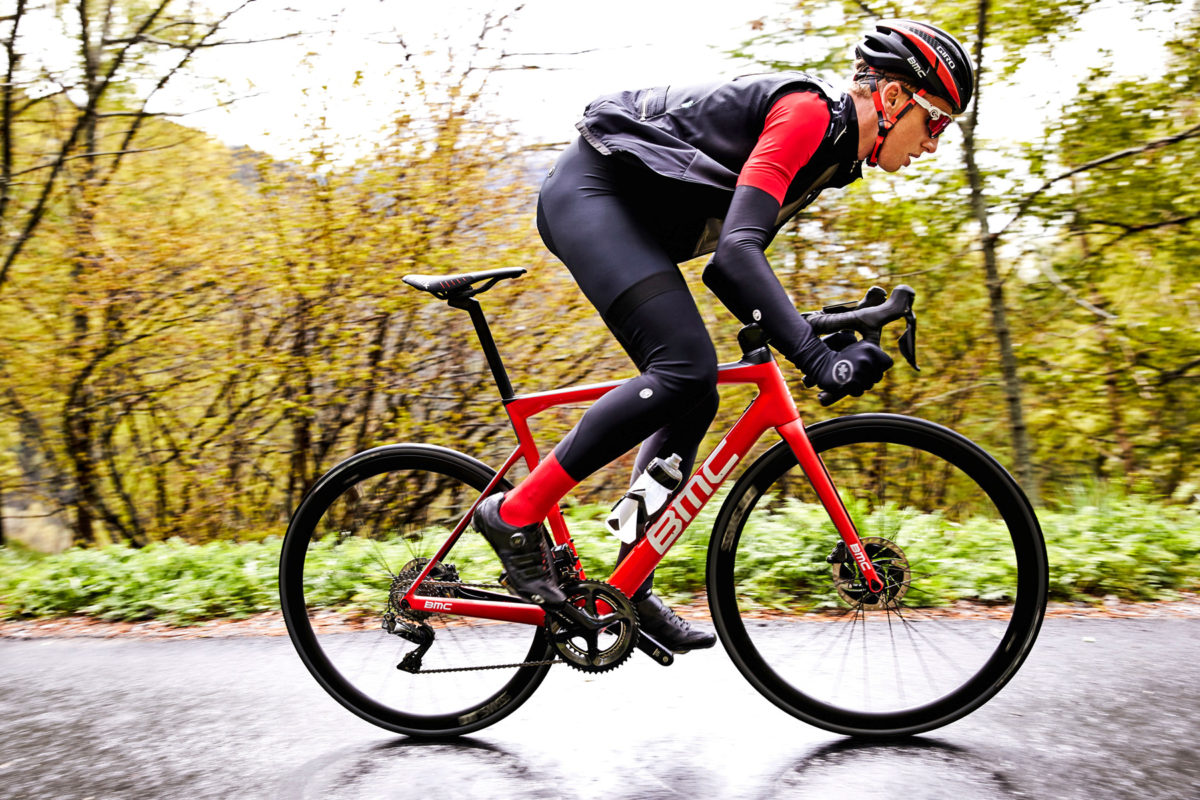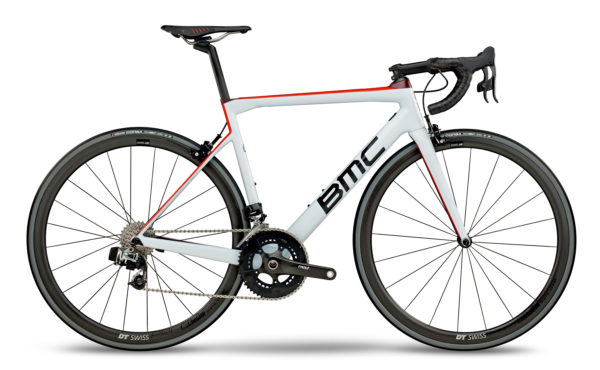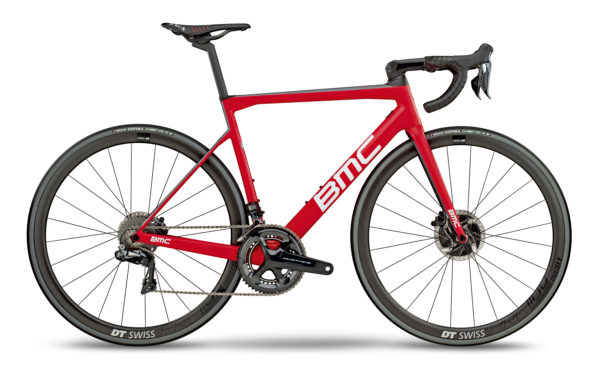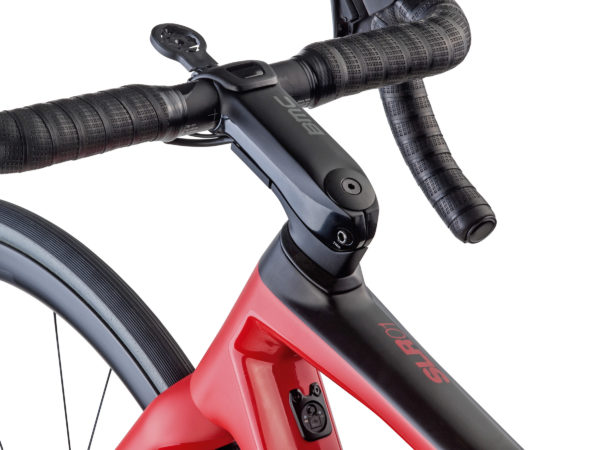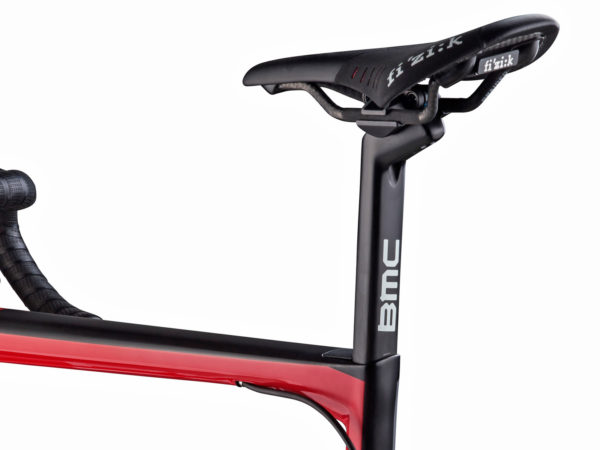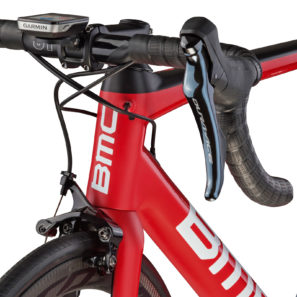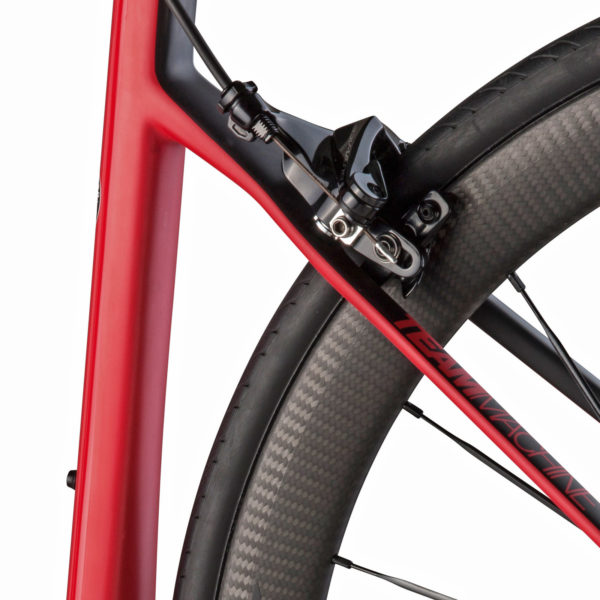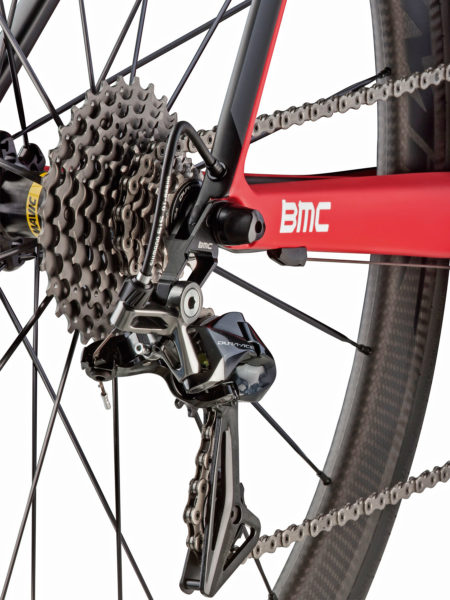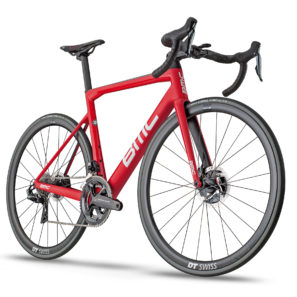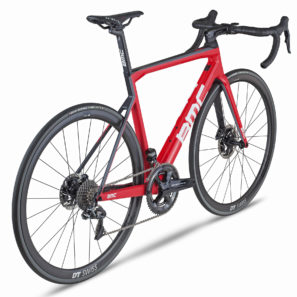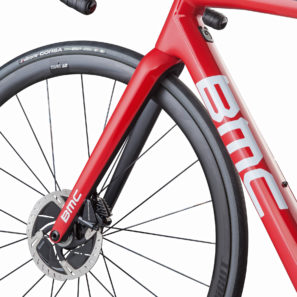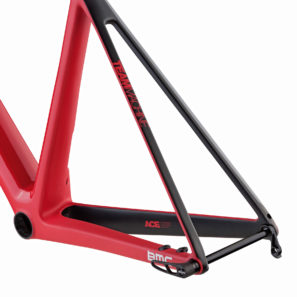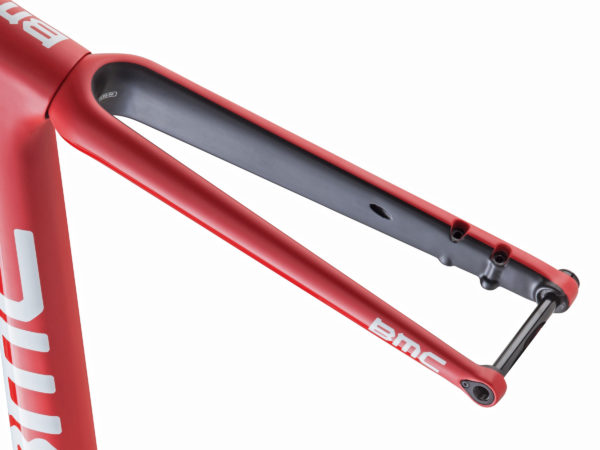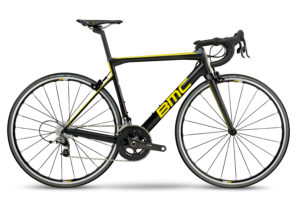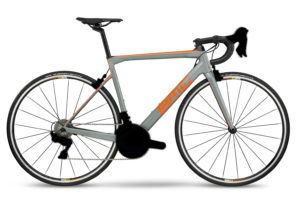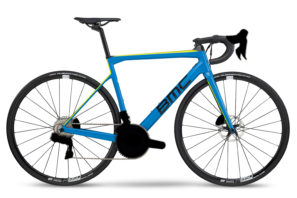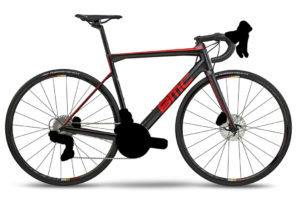BMC calls the substantial overhaul of the Teammachine SL01 an evolution of the race bike that has been ridden to a road World Championship, a Tour de France title, and a number of Grand Tour stage & World Tour wins along the way, with its latest major update back in 2013. While building off the same race-winning construction, geometry & ride character of the lightweight race bike’s predecessor, the new Teammachine incorporates the more integrated design approach that BMC refined in their popular Roadmachine endurance road bike last summer. It also adds braking flexibility, offering rim brake & disc brake versions that lets racers pick which bike suits their riding style best, without any compromise in all-around performance. Check out the full details of both bikes…
BMC Teammachine carbon road race bike
Underneath the new more sleek look of the new Teammachine, BMC has incorporated new carbon tech to the revised tubing shapes to match the excellent weight, stiffness, and compliance numbers that the previous generation of the bike already excelled at. With the new look also comes a lot more integration, like we see around the industry, that BMC says allowed them to add improved aerodynamics to the bike while keeping low weight and its all around race character.
Integration starts up front with an integrated cockpit system (ICS) that sticks with separate bar & stem for flexibility (and rider choice), but neatly integrates the stem & spacers into the headset & headtube to create a system with a small frontal area that can hide cabling while maintaining fit adjustability. BMC also includes a space inside the top of the downtube for one of the new integrates Di2 junction boxes that was introduced with the new Dura-Ace R9100 series. Curiously the integrated cockpit doesn’t seem to show up on the rim brake bikes or frame modules at all, with no rim brake Di2 builds (and only on the SLR01 Disc completes & frame modules.)
Teammachine SLR
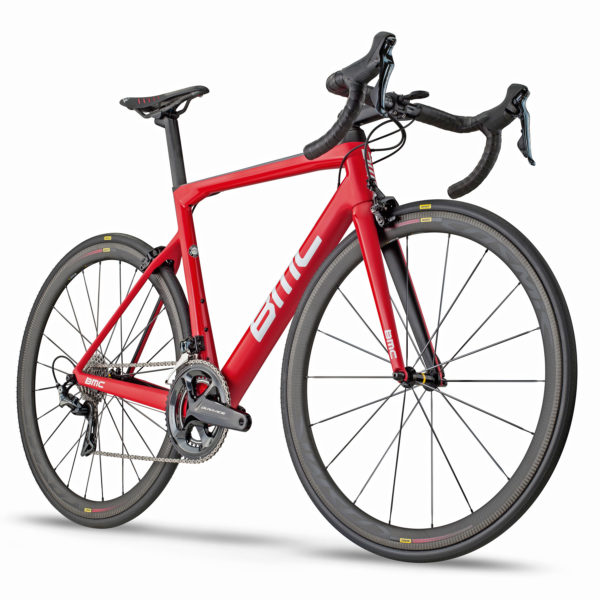 BMC developed the new Teammachine with the same Accelerate Composites Evolution (ACE) tech that they used in the previous generation. Basically they claim that using a more advanced ACE computer simulation setup, they are able to run through digital prototyping of the actual carbon construction in a way that their still can’t match. BMC claims ACE enables them to develop a much more refined carbon layup for the aerodynamically optimized bike to deliver a balance of ride stiffness & compliance that outperforms the competition’s more trial-and-error prototyping processes based on less integrated FEA & aero simulations. ACE was also key in developing the new asymmetric frame and fork designs that play a huge role in the optimized performance and ride quality of the new disc brake Teammachine.
BMC developed the new Teammachine with the same Accelerate Composites Evolution (ACE) tech that they used in the previous generation. Basically they claim that using a more advanced ACE computer simulation setup, they are able to run through digital prototyping of the actual carbon construction in a way that their still can’t match. BMC claims ACE enables them to develop a much more refined carbon layup for the aerodynamically optimized bike to deliver a balance of ride stiffness & compliance that outperforms the competition’s more trial-and-error prototyping processes based on less integrated FEA & aero simulations. ACE was also key in developing the new asymmetric frame and fork designs that play a huge role in the optimized performance and ride quality of the new disc brake Teammachine.
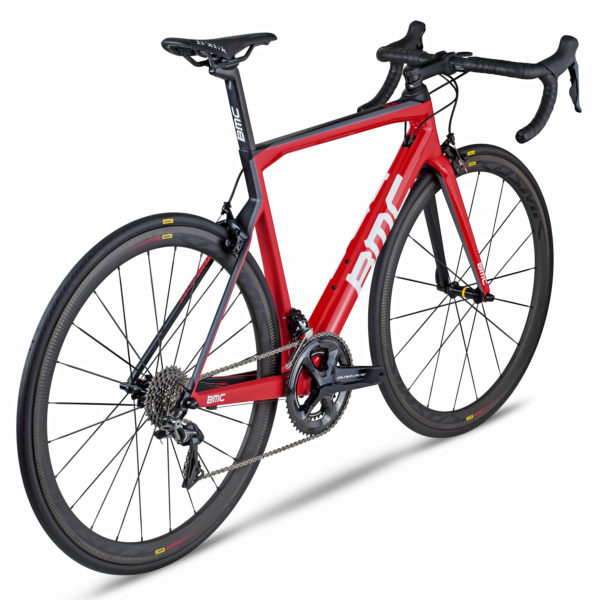
Improving over the already well-received prior generation, the new Teammachine claims improved bottom bracket stiffness in both brake versions for even quicker acceleration and more vertical compliance to long day comfort in the saddle. All the while BMC kept the same overall torsional stiffness for predictable, lively race handling. Through ACE layup work they were even able to deliver consistent torsional stiffness across the entire size range, something many bike makers fail to achieve.
Integration continues at the seat cluster for all bikes with a new hidden wedge-style seatpost clamp for the new proprietary D-shaped post that both improves aerodynamics and allows for more seatpost flex for comfort at the saddle.
Internal cable routing gets improved, whether for mechanical shifting where shift cables take the place of the Di2 junction box in the top of the downtube and a new Dynamic Cablestop in the headtube is able to let the rear brake cable pivot a bit as the handlebar is turned to reduce stress on the stop, or electronic shifting that can be routed completely internally through proper bar & stem setups.
The rim brake bike also gets improved tire clearance and better braking thanks to the added stiffness of direct-mount rim brakes, and a new sandwich direct mount Shimano rear derailleur hanger.
Teammachine SLR Disc
The new disc bike shares all of the same carbon layup, new integration, and tube shaping improvements of the rim brake Teammachine, plus it gets a few tricks of its own and even more asymmetric tech.
It gets a completely new, disc-specific fork design with a 20% larger left leg to withstand braking forces, while maintaining a balanced ride feel and light weight. Similar refinement happens in the non-driveside chainstay and together results in a Teammachine SLR Disc frame at 815g that is only 25g heavier than the prior rim brake bike.
The disc brake fork also gets a unique Direct-Frontal flat-mount disc caliper interface that mimics the solution in the rear, getting rid of adapters and a few precious grams along the way, but also making the fork 160mm rotor specific.
The disc bike also gets an updated lighter version of the thru-axle dropout and sandwiched derailleur hanger that they first crafted for the Roadmachine.
SLR01 TWO & SLR02 ONE
SLR01 Disc ONE & SLR02 Disc Two
In either rim or disc brake versions, the new Teammachine SLR is available in a six size range from 47cm up to 61cm. It will come in two frame spec levels for each braking version – Teammachine SLR01, Teammachine SLR02, Teammachine SLR01 Disc & Teammachine SLR02 Disc – with a number of Shimano & SRAM spec’d complete bikes in a few colors, plus frameset modules (frame, fork, seatpost, headset, stem & out-front GPS/camera mount) also available.
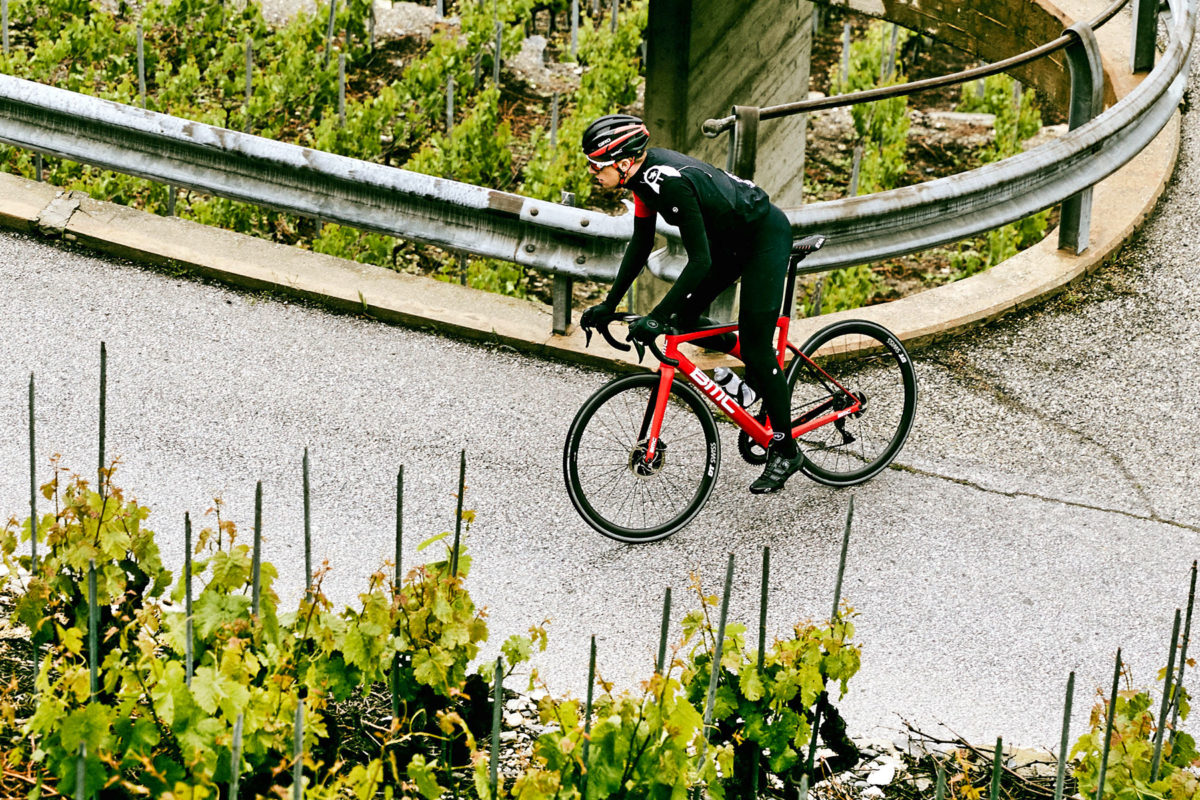
Pricing hasn’t yet been set, nor expected dates for retail availability.
As a very interesting parting note, you may notice that some of those bike pics have blacked out components on them. BMC has told us that we can expect new, updated photos in about a week’s time. But what we can for sure see looks like new direct-mount Shimano rear derailleurs in both mechanical & Di2 (Ultegra?) and new rotor design, plus maybe new crankset, front derailleur & brake calipers!
